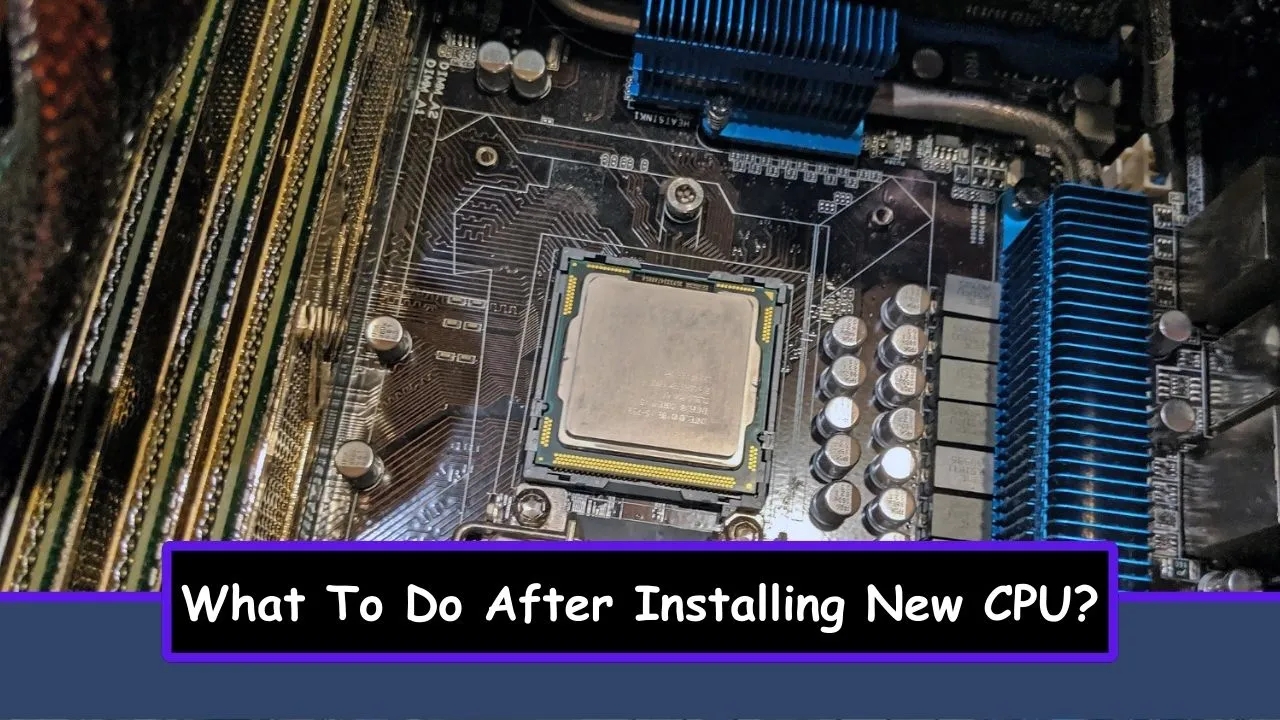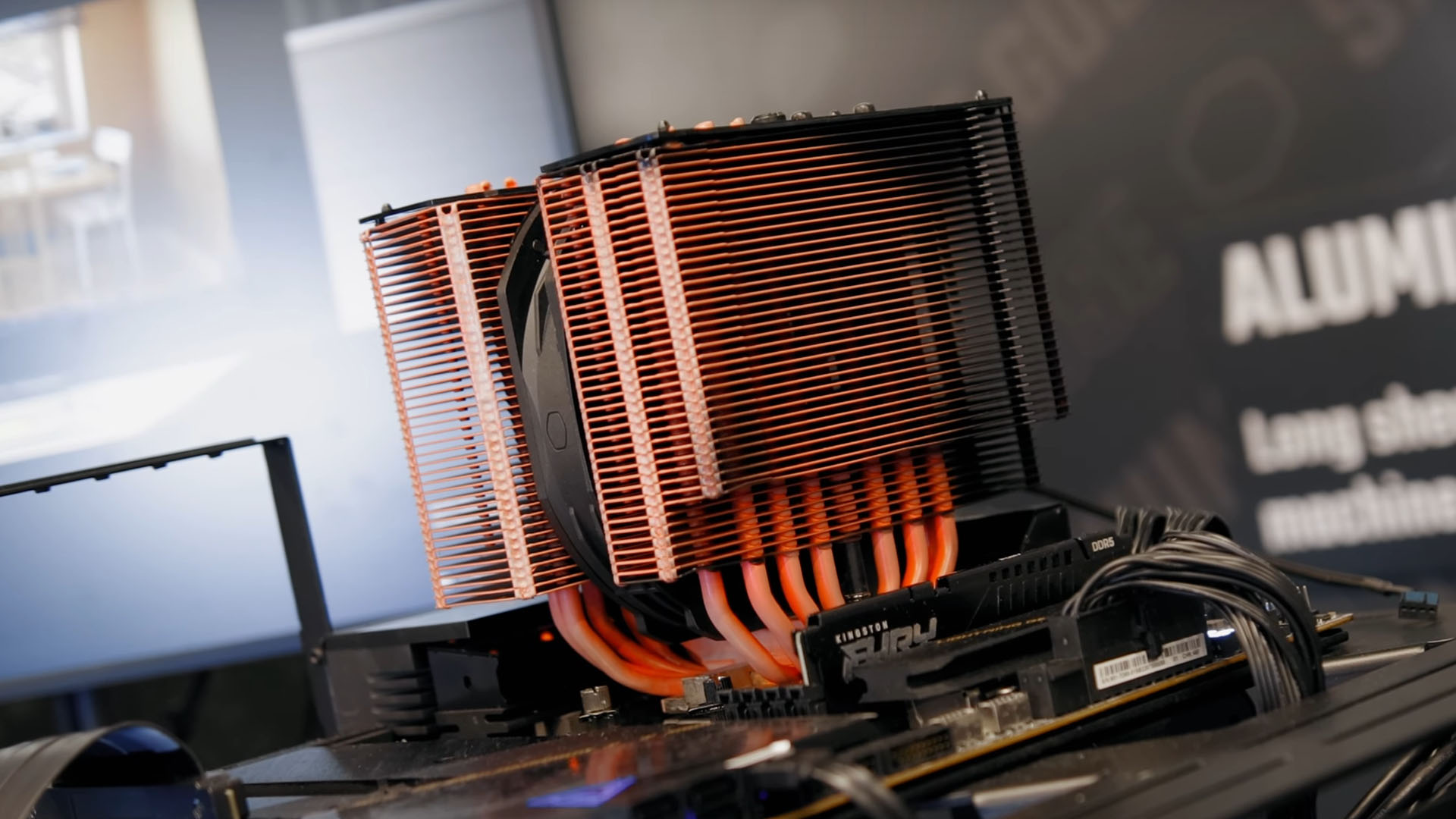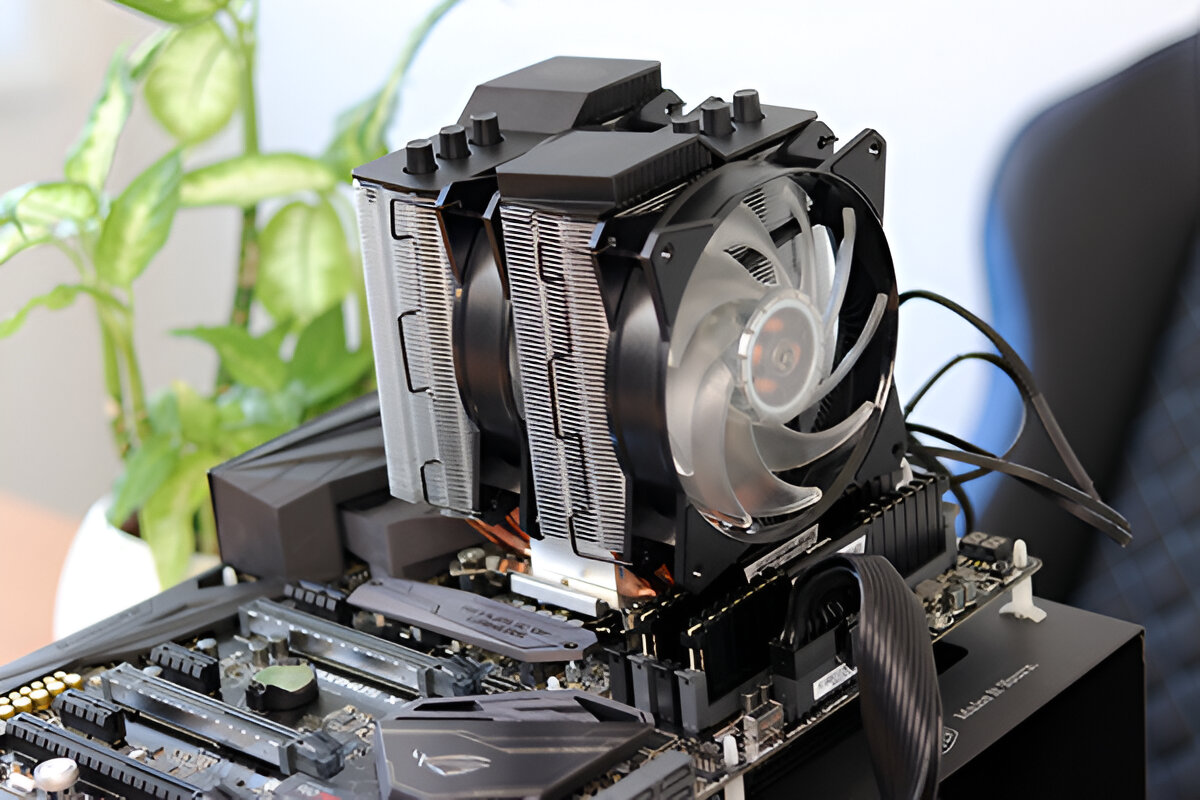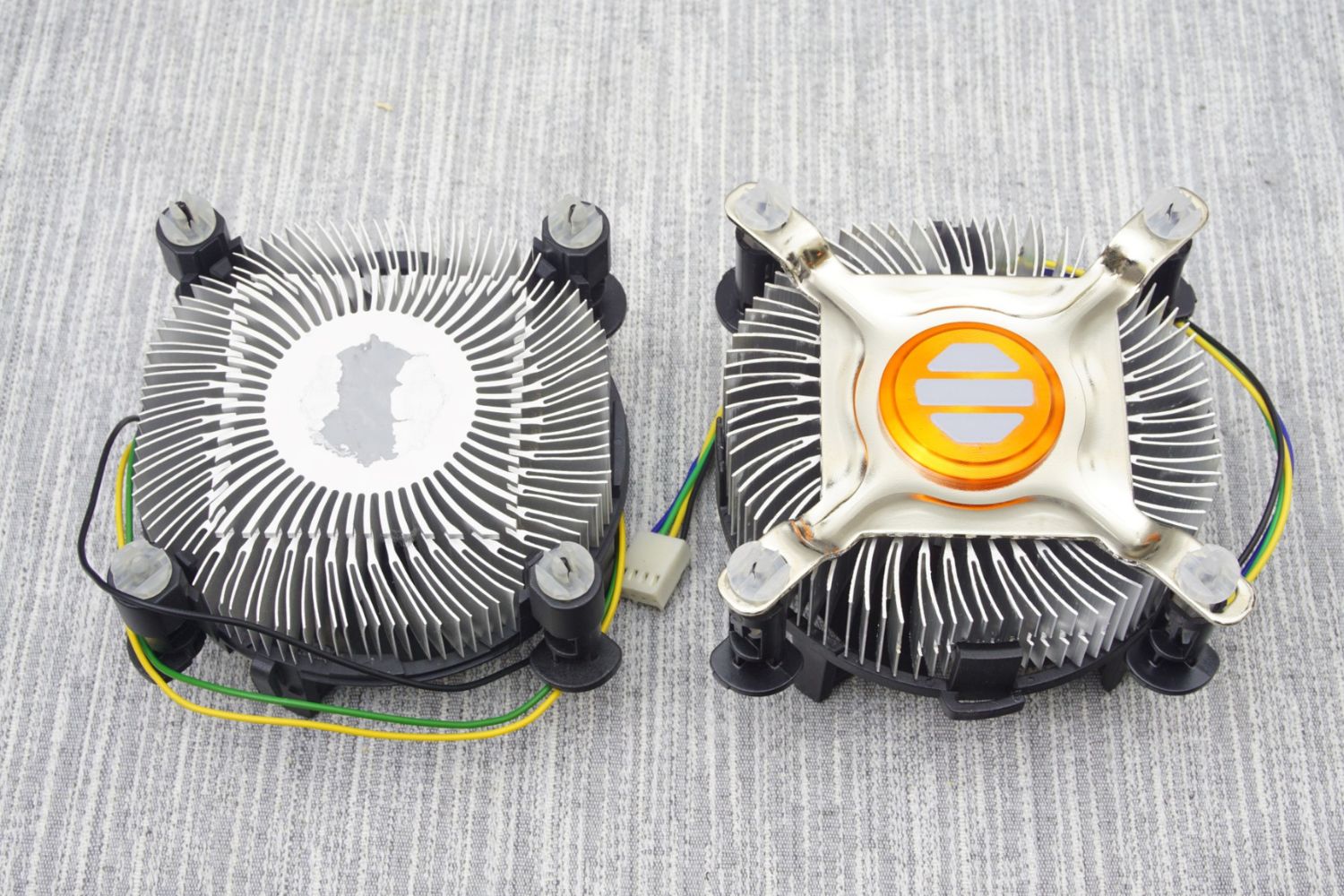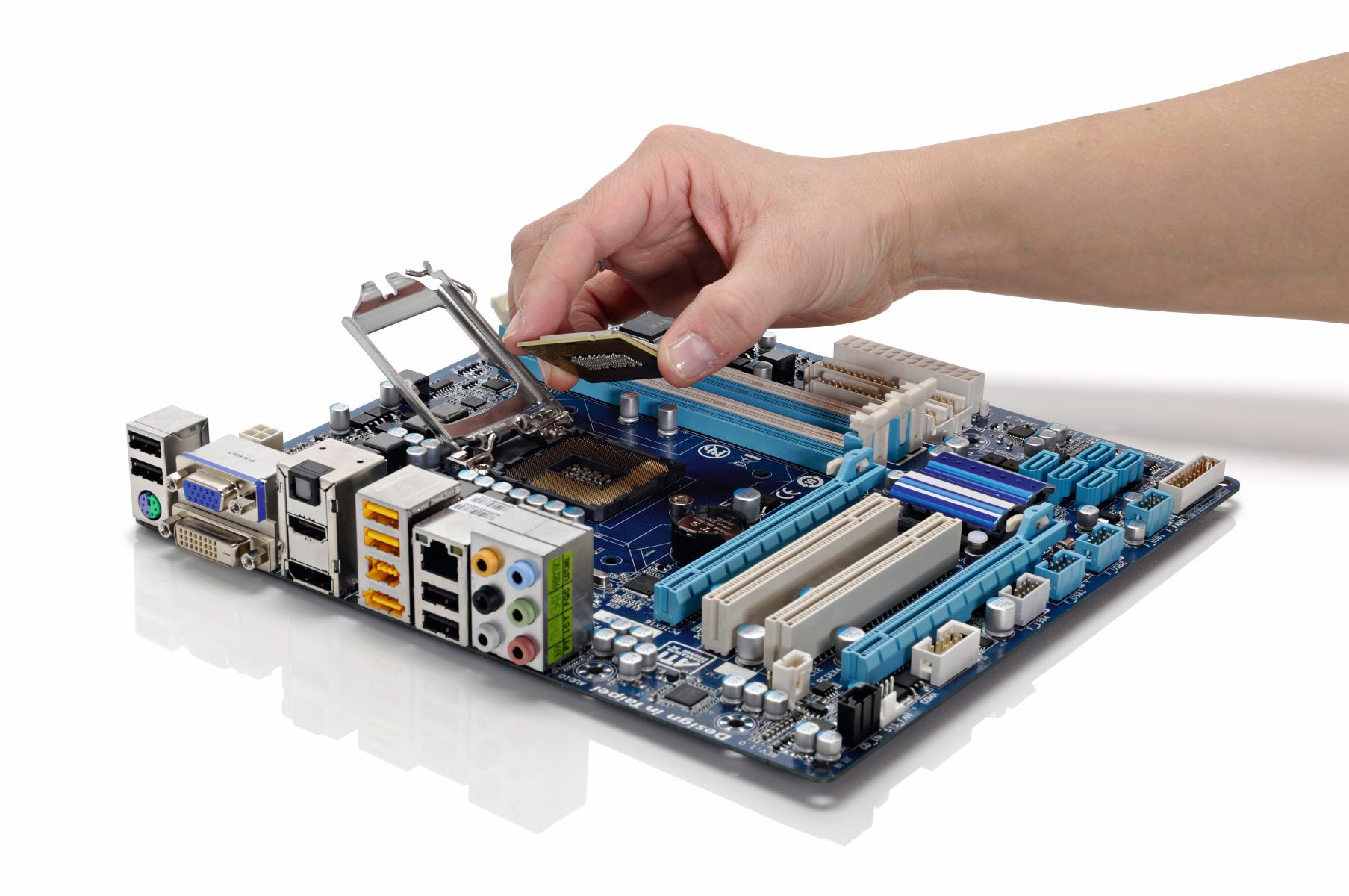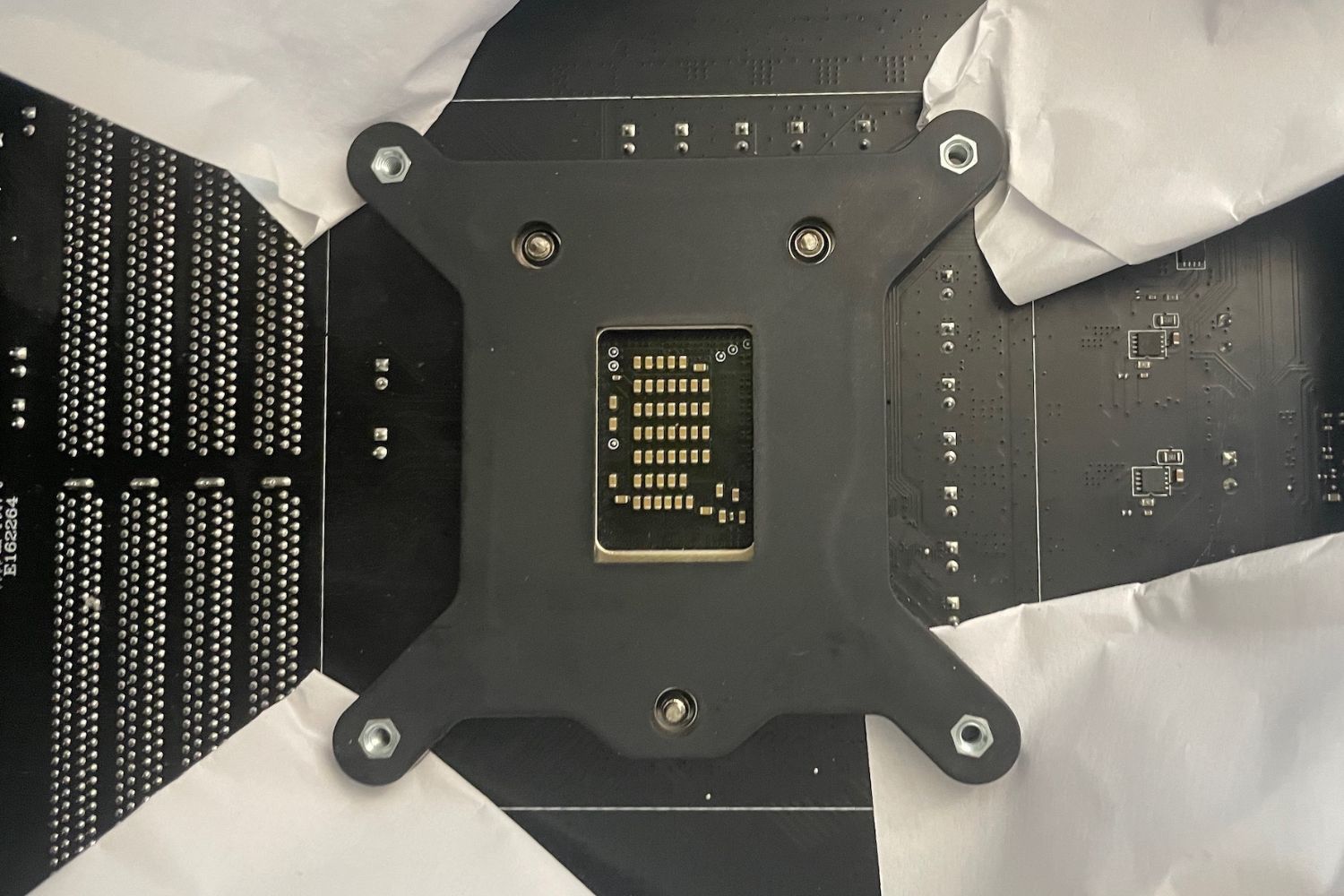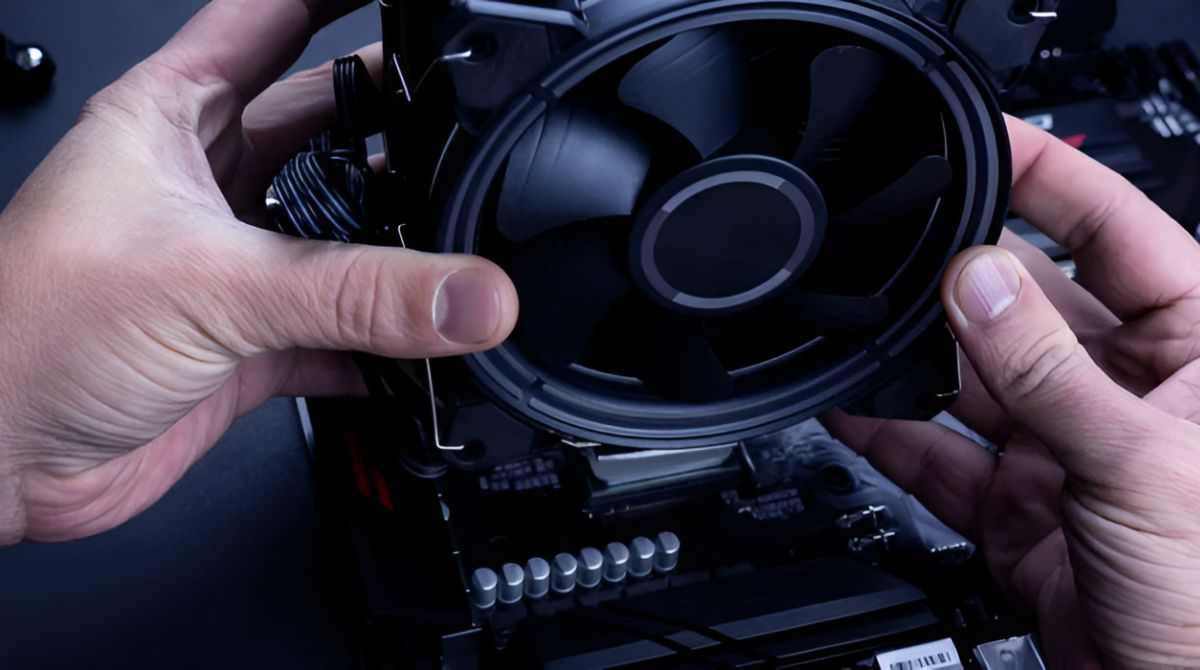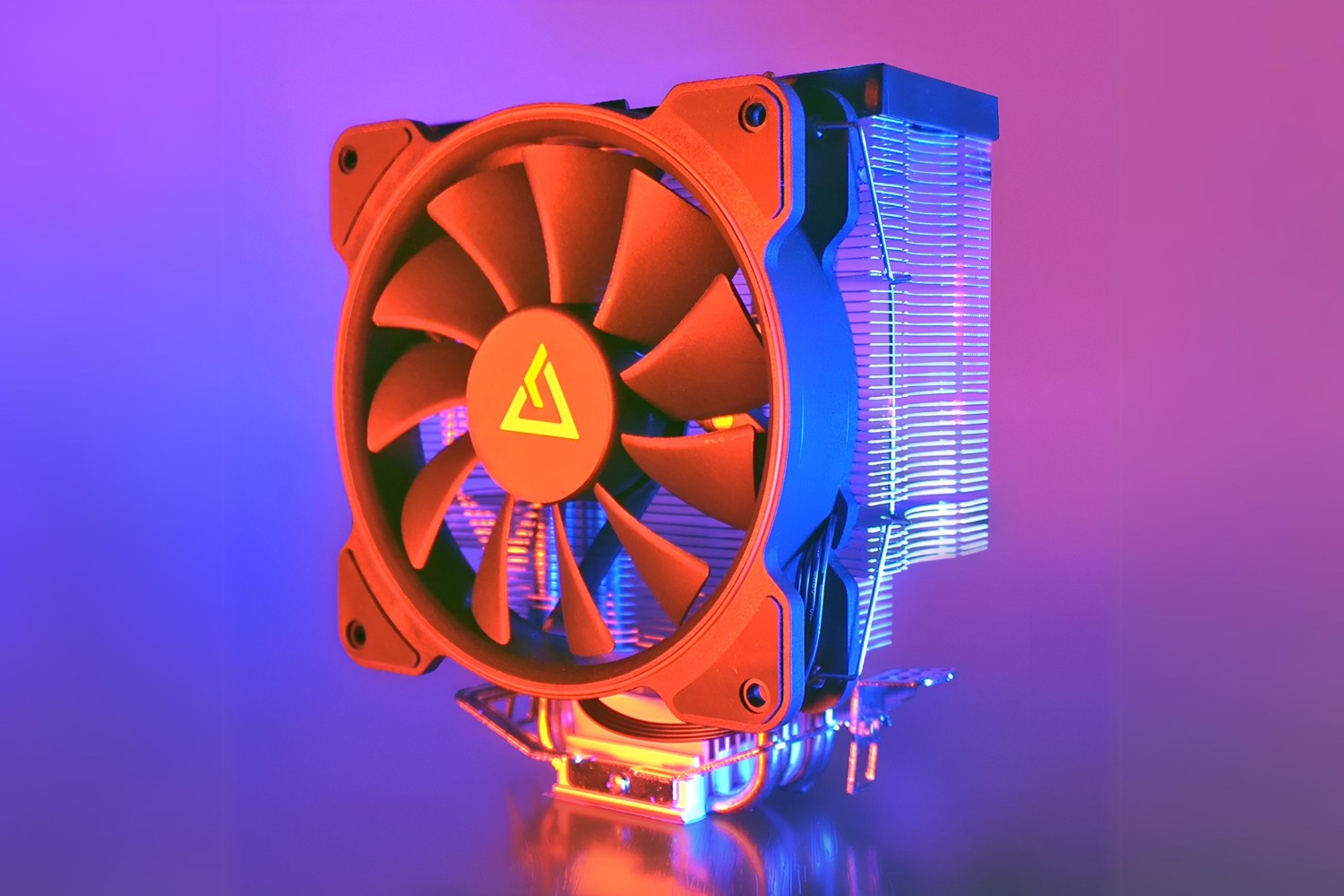Introduction
So, you’ve just installed a new CPU into your computer, and you’re excited to see the performance improvements it will bring. But before you start using your upgraded system, there are a few important steps you need to take to ensure everything is running smoothly and to maximize the potential of your new CPU.
Installing a new CPU is a significant upgrade that can greatly impact your computer’s performance. Whether you’re upgrading for gaming, video editing, or any other demanding tasks, it’s crucial to follow the right steps to ensure a successful installation.
In this article, we will guide you through the essential steps to take after installing a new CPU. By following these steps, you will not only optimize the performance of your computer but also ensure its long-term stability and compatibility with other components.
So, let’s dive in and explore what you need to do after installing a new CPU to make the most of your computer’s newfound power!
Update BIOS
After installing a new CPU, one of the first things you should do is update your computer’s BIOS (Basic Input/Output System). The BIOS is responsible for initializing hardware components and establishing communication between the operating system and your computer’s hardware.
Updating the BIOS is essential as it ensures that your motherboard can properly recognize and support your new CPU. Manufacturers release BIOS updates regularly to improve system stability, fix bugs, and add support for new hardware.
To update the BIOS, you can visit the manufacturer’s website and download the latest BIOS version for your specific motherboard model. It’s crucial to follow the instructions provided by the manufacturer carefully to avoid any issues during the update process.
Before updating the BIOS, it’s important to note that it’s a delicate procedure. Interrupting the process or using incorrect BIOS files can result in irreversible damage to your motherboard. Therefore, it’s advisable to ensure that your computer is connected to an Uninterruptible Power Supply (UPS) to prevent power outages during the update.
Once you have updated the BIOS, make sure to restart your computer to apply the changes. You can also enter the BIOS setup by pressing a designated key during the boot process, usually displayed on the screen, to verify that the new CPU is correctly recognized by the system.
Updating the BIOS not only ensures compatibility with your new CPU but also provides you with the latest features and optimizations offered by the manufacturer. It’s an essential step to unleash the full potential of your new processor and ensure a stable and efficient computing experience.
Ensure Proper Cooling
With the installation of a new CPU, it’s crucial to ensure that your system has proper cooling to maintain optimal performance and prevent overheating. CPUs generate heat when they’re under heavy load, and inadequate cooling can lead to performance throttling, decreased lifespan of components, and even system instability.
The first step is to ensure that your computer case has adequate airflow. Make sure that all air vents and fans are clean and free from dust buildup, as this can restrict airflow and lead to higher temperatures. Consider adding additional fans or upgrading to more efficient cooling solutions if needed.
Another critical aspect of cooling is the CPU cooler itself. Depending on the type of CPU you’ve installed, you may have either an included stock cooler or an aftermarket cooler. Stock coolers generally provide adequate cooling for standard use, but if you’re planning on overclocking or engaging in more demanding tasks, you might want to invest in a high-quality aftermarket CPU cooler.
When installing a CPU cooler, ensure that it is properly secured and making good contact with the CPU. Apply an appropriate amount of thermal paste to facilitate efficient heat transfer. Be mindful of following the manufacturer’s instructions for installation to avoid any compatibility or mounting issues.
Monitoring your CPU temperatures is essential to ensure proper cooling. You can use various software tools to monitor temperatures and adjust fan speeds accordingly. If you notice that your CPU temperatures are consistently high, check if the cooler is properly seated, and consider reapplying thermal paste if needed.
By ensuring proper cooling, you can maintain optimal performance, prolong the life of your CPU, and safeguard your system from potential thermal-related issues. Regularly monitoring temperatures and keeping your cooling system in top shape will help you get the most out of your new CPU.
Check CPU Temperatures
After installing a new CPU, it’s essential to monitor its temperatures to ensure it’s running within safe parameters. High temperatures can degrade performance, shorten the lifespan of the CPU, and potentially cause system instability. Therefore, regularly checking the CPU temperatures is crucial for maintaining optimal performance and preserving the longevity of your processor.
There are several software tools available that can provide real-time temperature readings for your CPU. These tools often display the temperature in Celsius or Fahrenheit and give you an idea of how hot your CPU is running under different workloads.
During normal usage, such as browsing the web or watching videos, the CPU temperatures should remain relatively low. However, during intensive tasks like gaming or running demanding applications, the temperatures may increase significantly. It’s important to ensure that the temperatures stay within the recommended range specified by the CPU manufacturer.
If you notice that your CPU temperatures are consistently high or exceeding safe limits, there are several steps you can take to address the issue. First, check if there is any dust buildup on the CPU cooler or surrounding components. Dust can obstruct airflow and lead to higher temperatures. Clean the cooler and fans using compressed air or a soft brush to remove any accumulated dust.
Another common cause of high temperatures is improper installation of the CPU cooler. Make sure that the cooler is securely fastened, making proper contact with the CPU. Additionally, ensure that an appropriate amount of thermal paste is applied to facilitate effective heat transfer.
If the temperatures remain high even after cleaning and reseating the cooler, consider upgrading to a more efficient aftermarket cooler. These coolers are designed to dissipate heat more effectively and can provide better cooling performance.
Regularly monitoring your CPU temperatures and addressing any issues promptly will help protect your CPU from overheating and ensure optimal performance. By keeping an eye on temperatures and taking necessary steps to maintain low temperatures, you can prolong the life of your CPU and enjoy stable and efficient computing.
Stress Test the CPU
Once you’ve installed a new CPU, it’s important to stress test it to ensure its stability and performance under heavy workloads. Stress testing involves pushing the CPU to its limits and monitoring its behavior to identify any potential issues such as overheating, instability, or crashes.
There are several software tools available that can stress test your CPU by generating high levels of usage and measuring its response. These tests typically simulate intense workloads that your CPU may encounter during tasks like video editing, gaming, or running complex applications.
Before running a stress test, ensure that your cooling system is properly set up and functioning correctly. High-performance workloads can raise the temperature of the CPU significantly, so it’s important to monitor the temperatures during the stress test to make sure they remain within safe limits.
Stress testing the CPU not only helps identify potential issues but also validates the stability and performance of the system as a whole. If the system crashes or experiences instability during the stress test, it may indicate that further adjustments or optimizations are needed.
During the stress test, monitoring software will provide real-time information on temperatures, fan speeds, and system utilization. Pay close attention to any signs of overheating or unusual behavior. If the temperatures rise to concerning levels or the system becomes unstable, it may be necessary to revisit the cooling system setup and make necessary adjustments.
Remember to run stress tests for an extended period to ensure comprehensive and accurate results. Different stress tests may have varying durations, but running them for at least 30 minutes to an hour is recommended.
Stress testing your CPU is an essential step to verify its stability and performance. By identifying any potential issues early on, you can take appropriate measures to address them and ensure a stable and reliable system for your computing needs.
Overclock (if Desired)
If you’re looking to extract even more performance from your new CPU, you may consider overclocking it. Overclocking involves increasing the operating frequency of the CPU beyond its stock settings, allowing it to perform tasks at a faster rate.
Before proceeding with overclocking, it’s important to understand the potential risks involved. Overclocking can lead to increased power consumption, higher temperatures, and reduced component lifespan if not done properly. It also voids the warranty provided by the CPU manufacturer.
If you decide to proceed with overclocking, there are a few steps to follow for a safe and efficient process. First, ensure that your motherboard supports overclocking and has robust power delivery and cooling capabilities. Additionally, make sure you are using a capable aftermarket CPU cooler to manage increased heat output.
Every CPU is unique, and not all CPUs overclock equally. It’s important to start with small incremental increases in frequency, known as overclocking in steps, and stress test the CPU after each adjustment to ensure stability. This process allows you to find the maximum stable frequency for your specific CPU without pushing it beyond its limits.
When overclocking, it’s crucial to monitor temperatures carefully to prevent overheating. Use monitoring software to keep an eye on the CPU temperatures during stress tests and ensure they remain within safe limits. If temperatures rise excessively, you may need to reduce the overclock or invest in better cooling solutions.
Overclocking requires patience and experimentation. It may take some time to find the optimal balance between performance and stability for your CPU. Remember that each CPU is different, so what works for someone else’s CPU may not work for yours.
A word of caution: always be mindful of the voltage settings when overclocking. Increasing the voltage is often necessary to sustain higher frequencies, but excessive voltage can damage the CPU. It’s recommended to stay within safe voltage limits specified by the CPU manufacturer.
Overclocking can provide a noticeable performance boost, especially in applications that are CPU-intensive. However, it’s important to approach it with caution and always prioritize the stability and longevity of your system.
Check Compatibility with Other Components
When you install a new CPU, it’s essential to verify its compatibility with the other components in your system. Compatibility issues can arise due to differences in socket types, power requirements, or motherboard support. Checking for compatibility ensures that all components work harmoniously together and prevents potential performance or stability issues.
The first step is to ensure that your motherboard is compatible with the new CPU. Check the manufacturer’s website or the motherboard’s specifications to confirm that the CPU is supported. Pay close attention to the socket type, as different CPUs require specific socket types to function.
Next, consider the power requirements of the new CPU. More powerful CPUs may require higher wattage power supplies to ensure stable operation. Check your power supply’s specifications to ensure it can provide sufficient power to the new CPU along with other components in your system.
It’s also important to verify the compatibility of the RAM modules with the new CPU. Check the supported RAM speeds and configurations specified by the CPU and motherboard. Incompatible RAM configurations can result in reduced performance or system instability.
If you’re using an aftermarket CPU cooler, ensure that it is compatible with the new CPU socket. Some coolers may require additional mounting brackets or adapters to fit properly on different socket types. Consult the cooler’s manufacturer website or documentation to verify compatibility and ensure a secure fit.
When upgrading the CPU, it’s a good idea to update the motherboard’s BIOS to the latest version if needed. BIOS updates often include improvements in compatibility and support for new CPUs. Check the motherboard manufacturer’s website for the latest BIOS version and follow the instructions provided to update it.
By checking the compatibility of your new CPU with other components, you can avoid potential issues such as system crashes, boot failures, or performance bottlenecks. It ensures a smooth integration of the new CPU into your system, allowing you to fully enjoy the benefits of your CPU upgrade.
Install or Update Drivers
After installing a new CPU, it’s important to install or update the necessary drivers to ensure proper functionality and compatibility with the operating system. Drivers are software components that allow the CPU and other hardware devices to communicate effectively with the operating system and other software.
The first step is to check the manufacturer’s website for the latest drivers specific to your new CPU. These drivers are typically provided to enhance performance, fix bugs, and improve compatibility with the operating system.
Start by downloading and installing the latest chipset drivers for your motherboard. The chipset drivers provide essential support for the CPU and other components on the motherboard, ensuring proper communication and optimal performance.
Next, check for updated drivers for other devices in your system such as the graphics card, sound card, Ethernet adapter, and any other hardware components connected to your computer. It’s advisable to visit the respective manufacturers’ websites to obtain the latest drivers for each device.
When installing the drivers, follow the instructions provided by the manufacturer and make sure to restart your computer if required. Restarting the system helps in properly initializing the newly installed or updated drivers.
Additionally, ensure that your operating system is up to date with the latest patches and updates. These updates often include important driver updates that can improve system stability and compatibility.
Regularly checking for driver updates and keeping your system’s drivers up to date can help resolve compatibility issues, improve performance, and ensure a smooth overall experience with your new CPU.
If you’re unsure about which drivers to install or update, you can use driver management software that automatically scans your system, identifies outdated drivers, and provides recommendations for updating them. These tools can save you time and help maintain an optimized and stable system.
By taking the time to install or update the necessary drivers, you can ensure that your new CPU is fully supported by the operating system and other hardware components, resulting in better overall performance and compatibility.
Verify System Stability
Once you have completed all the necessary steps after installing a new CPU, it’s crucial to verify the stability of your system. Verifying system stability ensures that your computer is performing optimally and can handle demanding tasks without issues or crashes.
To verify system stability, you can run various stress tests, benchmarking tools, or even engage in intensive activities such as gaming or video editing. These tests put your system under heavy load and allow you to observe its behavior under different scenarios.
During the stability testing process, monitor the CPU temperatures, system utilization, and overall performance. Be attentive to any signs of overheating, unusual behavior, or system crashes. If you notice any abnormalities, investigate the cause and make necessary adjustments, such as improving cooling or adjusting settings.
It’s a good practice to run stability tests for an extended period to ensure consistent performance. While short bursts of stability tests can be useful for quick checks, longer-duration tests provide a more comprehensive assessment of your system’s stability and performance.
If your system exhibits instability during stress tests or crashes frequently, it may be an indication of an underlying issue. In such cases, consider reviewing your hardware setup, including connections, cooling solution, or power supply, to ensure everything is properly installed and working as intended.
Additionally, regularly monitoring system temperatures, performance, and hardware health even after the initial stability testing is essential. This ongoing monitoring allows for early detection of potential issues and enables proactive troubleshooting to maintain system stability in the long run.
By verifying the stability of your system, you can ensure that your new CPU is functioning as intended and that all components are working together harmoniously. This leads to a smoother and more reliable computing experience, allowing you to fully enjoy the benefits of your CPU upgrade.
Conclusion
Installing a new CPU in your computer can greatly improve performance and enhance your computing experience. However, it’s essential to follow the right steps to ensure a successful upgrade and maximize the potential of your new processor.
After installing a new CPU, updating the BIOS should be one of the first steps to ensure compatibility and access the latest features and optimizations offered by the manufacturer. Ensuring proper cooling is also crucial to maintain optimal performance and prevent overheating.
Checking CPU temperatures, stress testing, and overclocking (if desired) allow you to monitor and optimize performance while ensuring stability and longevity for your system. Additionally, verifying compatibility with other components and installing or updating drivers enhances compatibility and performance.
Lastly, it’s important to verify the stability of your system by running stress tests and monitoring its behavior under heavy workloads. This ensures that your computer can handle demanding tasks without crashing or experiencing performance issues.
By following these steps and taking the necessary precautions, you can unleash the full potential of your new CPU, enjoy improved performance, and have a stable and reliable system. Regular maintenance, monitoring, and necessary adjustments will help ensure that your computer continues to perform optimally in the long run.
So, take your time, follow the steps outlined in this article, and enjoy the power and efficiency that your new CPU brings to your computing experience!







